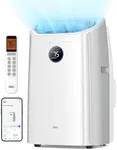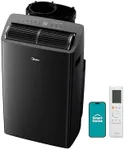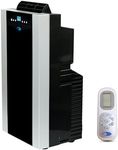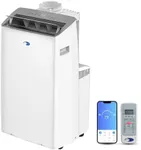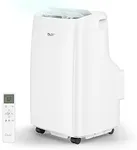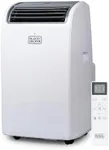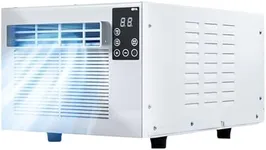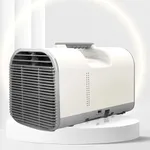Buying Guide for the Best Indoor Portable Air Conditioning Units
Choosing the right indoor portable air conditioning unit can make a significant difference in your comfort during hot weather. These units are designed to cool specific areas of your home or office and can be moved from room to room as needed. To find the best fit for you, it's important to understand the key specifications and how they relate to your needs. Here are the main factors to consider when selecting a portable air conditioner.Cooling Capacity (BTU)Cooling capacity, measured in British Thermal Units (BTU), indicates how much heat the unit can remove from a room per hour. This is crucial because it determines the size of the room the unit can effectively cool. Units with lower BTU ratings (5,000-8,000 BTU) are suitable for small rooms up to 300 square feet, medium BTU ratings (8,000-12,000 BTU) are ideal for rooms between 300-500 square feet, and higher BTU ratings (12,000-14,000 BTU) are best for larger rooms up to 700 square feet. To pick the right one, consider the size of the room you need to cool and choose a unit with an appropriate BTU rating.
Energy Efficiency Ratio (EER)The Energy Efficiency Ratio (EER) measures the unit's cooling efficiency. It is calculated by dividing the BTU rating by the power consumption in watts. A higher EER indicates a more efficient unit, which can save you money on energy bills. EER ratings typically range from 8 to 12. For better energy savings, look for units with an EER of 10 or higher. If you plan to use the unit frequently, investing in a higher EER model can be beneficial in the long run.
Noise LevelNoise level, measured in decibels (dB), indicates how loud the unit will be when operating. This is important if you plan to use the unit in a bedroom, office, or any other space where quiet is essential. Portable air conditioners typically range from 50 to 70 dB. Units below 55 dB are considered quiet and are suitable for bedrooms or offices, while units above 60 dB may be better suited for living rooms or areas where noise is less of a concern. Consider where you will place the unit and choose a noise level that will not disrupt your activities.
Portability FeaturesPortability features include the unit's weight, size, and the presence of wheels or handles. These features are important if you plan to move the unit between rooms frequently. Lighter units (under 50 pounds) and those with built-in wheels and handles are easier to transport. If you need to move the unit often, look for these features to ensure convenience and ease of use.
Dehumidification FunctionMany portable air conditioners also have a dehumidification function, which removes excess moisture from the air. This is particularly useful in humid climates, as it can make the room feel cooler and more comfortable. The dehumidification capacity is measured in pints per day. Units with higher dehumidification capacities (up to 70 pints per day) are better for very humid environments. If you live in a humid area, consider a unit with a strong dehumidification function to enhance comfort.
Programmable Timer and Remote ControlA programmable timer allows you to set the unit to turn on or off at specific times, which can help save energy and ensure the room is cool when you need it. A remote control adds convenience by allowing you to adjust settings from a distance. These features are particularly useful if you want to control the unit without getting up or if you want to pre-cool a room before you enter. If convenience and energy savings are important to you, look for units with these features.
Maintenance and Filter TypeRegular maintenance is essential for keeping your portable air conditioner running efficiently. Check the type of filter the unit uses and how easy it is to clean or replace. Washable and reusable filters are more convenient and cost-effective in the long run. If you prefer low-maintenance options, look for units with easy-to-access filters that can be cleaned without much hassle. Consider your willingness to perform regular maintenance when choosing a unit.



